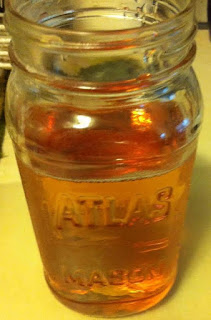 |
The Virgin Rainbow is the world's most expensive opal.
|
Frankly I'm an opal come lately. This year while out researching jewelry, finally I see how beautiful opals are. Speaking practically, I can't buy every gemstone so maybe that's why I overlooked this fascinating gem for so long. The semi-precious stone is known to exist on Mars, and is reported to have been a favorite of Great Britain's Queen Victoria (who wore it and gave opal as gifts to her 5 daughters). Did the jewel's striking stream of iridescence catch Her Majesty's eye, then claim her heart? It seems so!Opal is a ''hydrated amorphous'' form of the compound silicon dioxide (a/k/a silica - SiO2·nH2O). The gemstone has a high water content and is therefore classed as a mineraloid, as opposed to, the crystallite gems like diamonds, sapphires, rubies, emeralds or garnets, which are examples of minerals.Opal forms when a mixture of water and silica travels over the earth and through rocks, including limonite, sandstone, rhyolite, marl and basalt, as well as, across decomposing fossils, depositing itself into the earth's natural cracks, and faults. It's a process that gets repeated again and again over time until opal forms. In fact, it takes 5 - 6 million years for 1 cm of opal to mature!
 |
The white and crystal opal may be my favorites. I'd love to see all 5 colors LIVE on display.
|
There are 2 broad classes of opal: precious and common, and it's a mind-twister explaining the differences of opal within these two broad classes. Suffice it to say, precious opal has a play of color (iridescence), while common opal does not. Generally the play (or flashes) of color makes precious opal gemstone quality; yet common opal (including milk opal) can sometimes display color and be gemstone quality too. What is so phenomenal about opal is the variety of color and patterns of the different stones in both the precious and common classes -- it's vast and complex when studied by jewelers. Each stone is unique. Iridescent black opal tends to be rare and more expensive. Here's a link to explain in detail the secret of opal's colors.
Australia supplies the world with about 95% of its opal, most notably the black opal. Ethiopia is a fine source of jelly opal (it has a translucent background), although they tend to be hydrophanours, i.e., they are the most porous and therefore absorb liquids (like water, oils, creams, perfumes or sweat) easily, so you must be especially careful with them. What's more, some mining of opal occurs in the USA (in Nevada, Oregon and Idaho), central Mexico, the Czech Republic, Canada, Slovakia, Hungry, Turkey, Indonesia and Brazil to name several areas of the world where it is found. The US tends to have white opal, and Mexico the red, translucent fire opal.
 |
Photo: FWC Jewelers of a Mexican Fire opal, which despite being translucent in appearance like crystallites is a soft stone like all opals.
Opal rates a 5.5 - 6.5 on Moh's Scale of Hardness, making it a soft gemstone that will scratch or break if abused. It's one reason I don't own it, but when you consider that pearls are softer, registering a 4.5 in hardness, and I take care of those, it's a poor reason not to buy it! Often cut as cabochons, with proper care, opals are tough enough to wear as jewelry. |
 |
Photo: Courtesy of Your Average Jeweler of uncut white opal. See the sidebar for a link to Andrew's YouTube videos.
|
Opal is less expensive than emeralds, rubies, sapphires or diamonds, but likely about as old and certainly unique, eye-catching and gorgeous. The fact that it is found on Mars tells us there is water on the red planet and hints that perhaps there was/is some form of life also. For sure, the delicate gemstone is another marvel of Mother Nature enhanced by the artistry of man so we can wear it!
Extra tips on whether you should buy an opal: On a limited budget, only buy what you love. So if you love opal, yes, as it's less expensive than some other stones. But, jewelry is nothing more than a luxury, so always buy the gemstones you love even if you must wait to save up for them. If you have no fine jewelry, I'd start with pearls (earrings and a necklace) as they're lovely, a great value, classic and versatile. Later you can add your favorite gemstone.😊
You may also enjoy:


















